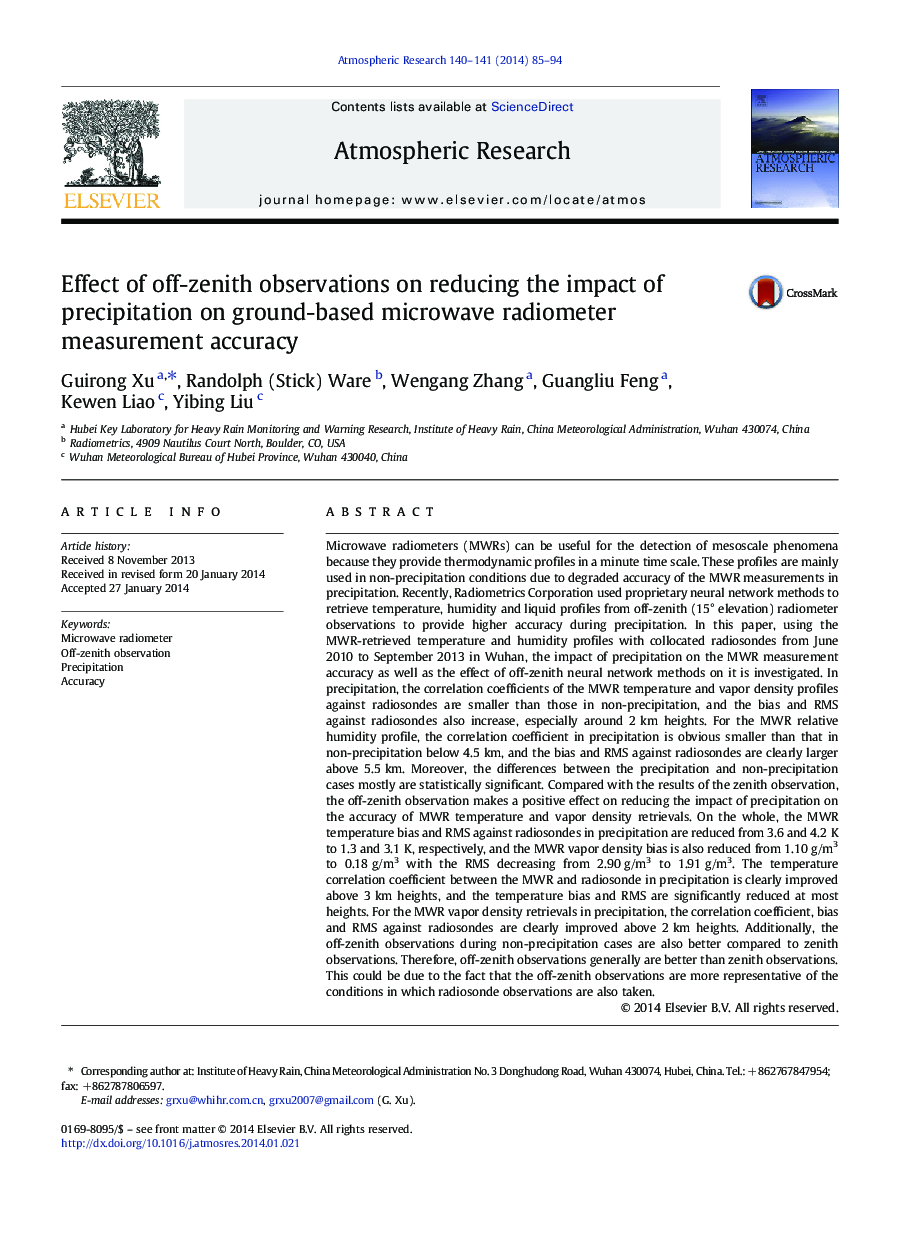| Article ID | Journal | Published Year | Pages | File Type |
|---|---|---|---|---|
| 4449884 | Atmospheric Research | 2014 | 10 Pages |
•The accuracy of MWR temperature and vapour density profiles is degraded in precipitation with statistically significance.•Off-zenith method can reduce the impact of precipitation on the accuracy of MWR temperature and vapour density retrievals.•Off-zenith method also improves the accuracy of MWR temperature and vapour density retrievals in non-precipitation.•The positive effect of off-zenith method could be due to its more representative observations of the radiosonde conditions.
Microwave radiometers (MWRs) can be useful for the detection of mesoscale phenomena because they provide thermodynamic profiles in a minute time scale. These profiles are mainly used in non-precipitation conditions due to degraded accuracy of the MWR measurements in precipitation. Recently, Radiometrics Corporation used proprietary neural network methods to retrieve temperature, humidity and liquid profiles from off-zenith (15° elevation) radiometer observations to provide higher accuracy during precipitation. In this paper, using the MWR-retrieved temperature and humidity profiles with collocated radiosondes from June 2010 to September 2013 in Wuhan, the impact of precipitation on the MWR measurement accuracy as well as the effect of off-zenith neural network methods on it is investigated. In precipitation, the correlation coefficients of the MWR temperature and vapor density profiles against radiosondes are smaller than those in non-precipitation, and the bias and RMS against radiosondes also increase, especially around 2 km heights. For the MWR relative humidity profile, the correlation coefficient in precipitation is obvious smaller than that in non-precipitation below 4.5 km, and the bias and RMS against radiosondes are clearly larger above 5.5 km. Moreover, the differences between the precipitation and non-precipitation cases mostly are statistically significant. Compared with the results of the zenith observation, the off-zenith observation makes a positive effect on reducing the impact of precipitation on the accuracy of MWR temperature and vapor density retrievals. On the whole, the MWR temperature bias and RMS against radiosondes in precipitation are reduced from 3.6 and 4.2 K to 1.3 and 3.1 K, respectively, and the MWR vapor density bias is also reduced from 1.10 g/m3 to 0.18 g/m3 with the RMS decreasing from 2.90 g/m3 to 1.91 g/m3. The temperature correlation coefficient between the MWR and radiosonde in precipitation is clearly improved above 3 km heights, and the temperature bias and RMS are significantly reduced at most heights. For the MWR vapor density retrievals in precipitation, the correlation coefficient, bias and RMS against radiosondes are clearly improved above 2 km heights. Additionally, the off-zenith observations during non-precipitation cases are also better compared to zenith observations. Therefore, off-zenith observations generally are better than zenith observations. This could be due to the fact that the off-zenith observations are more representative of the conditions in which radiosonde observations are also taken.
